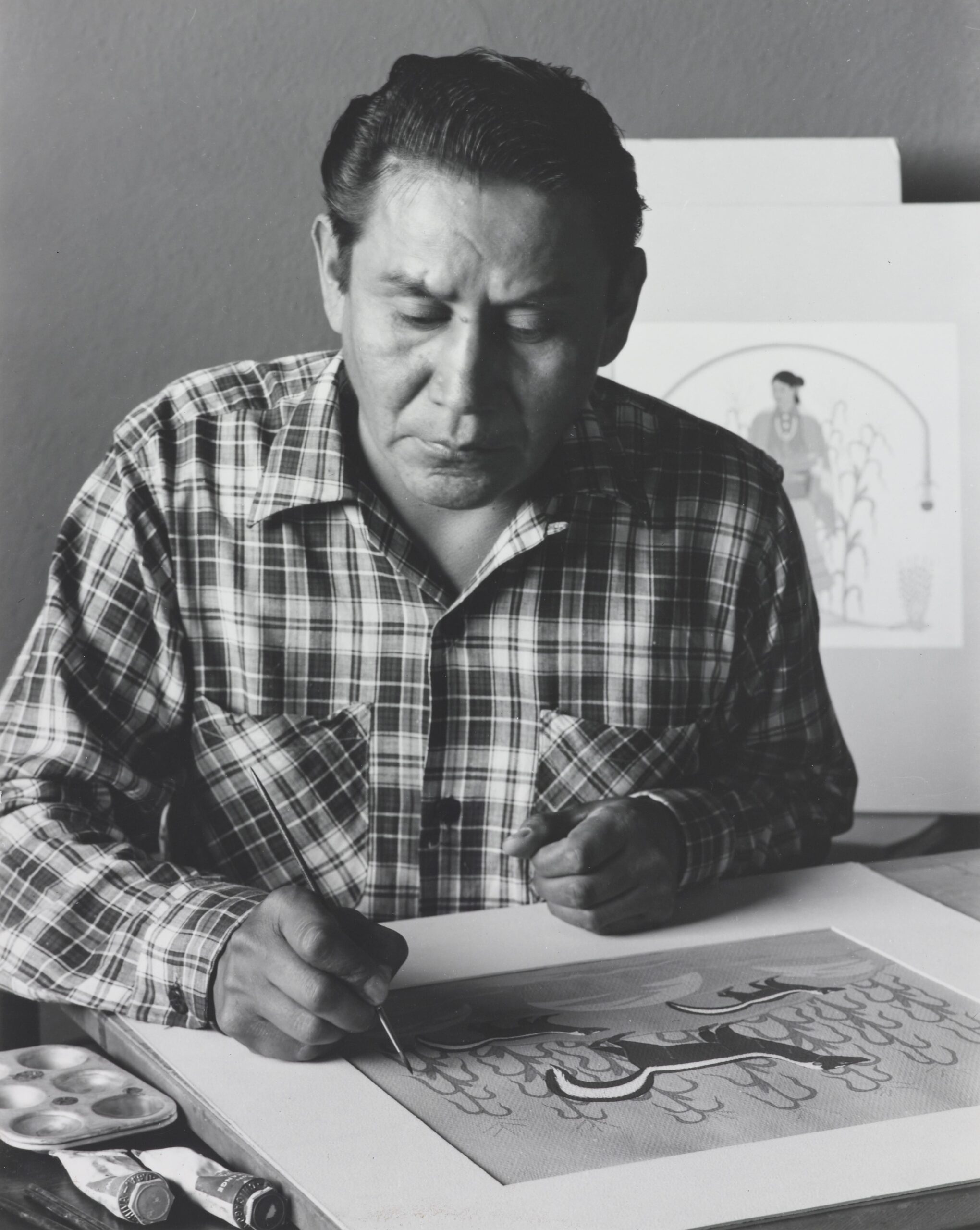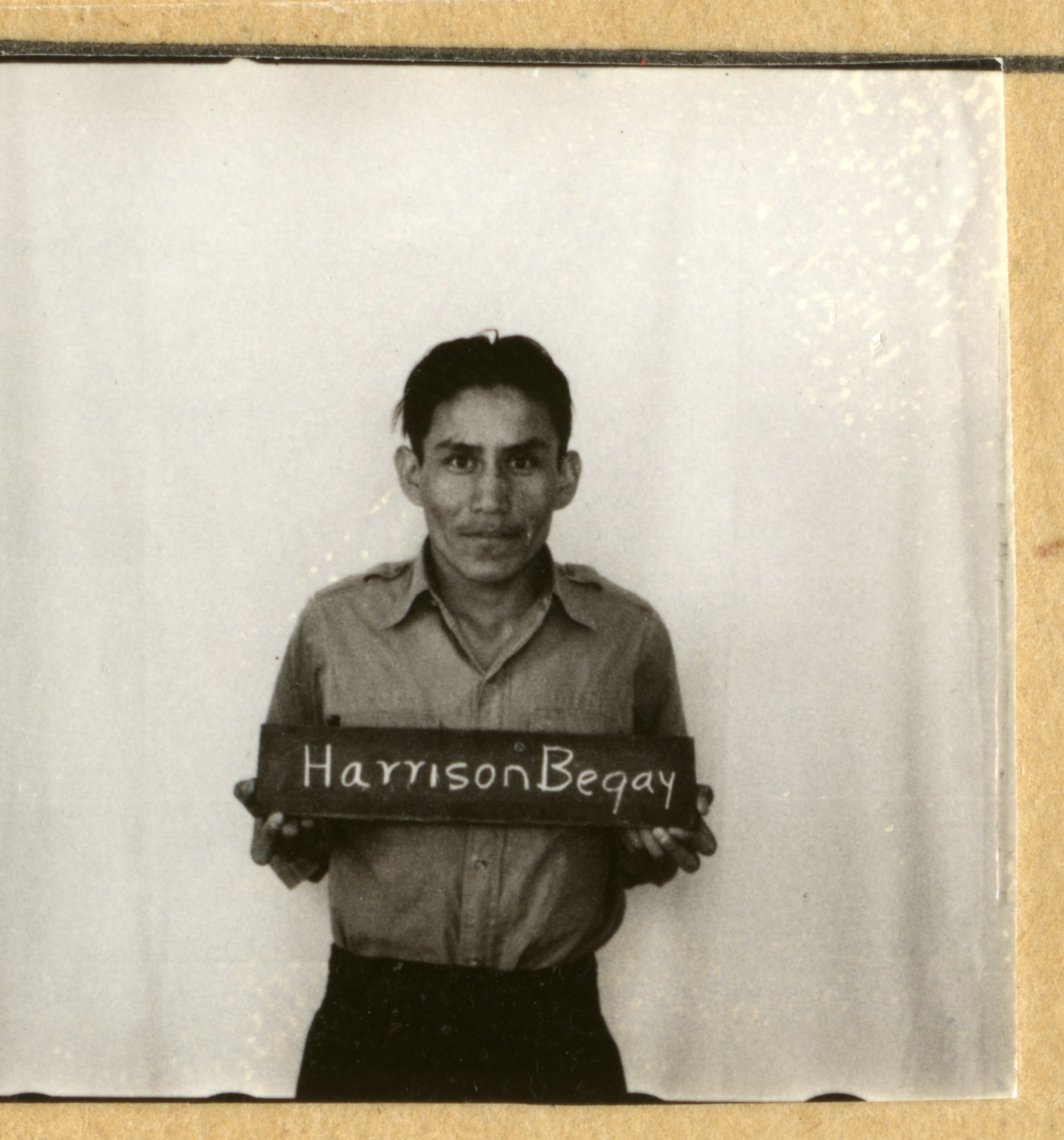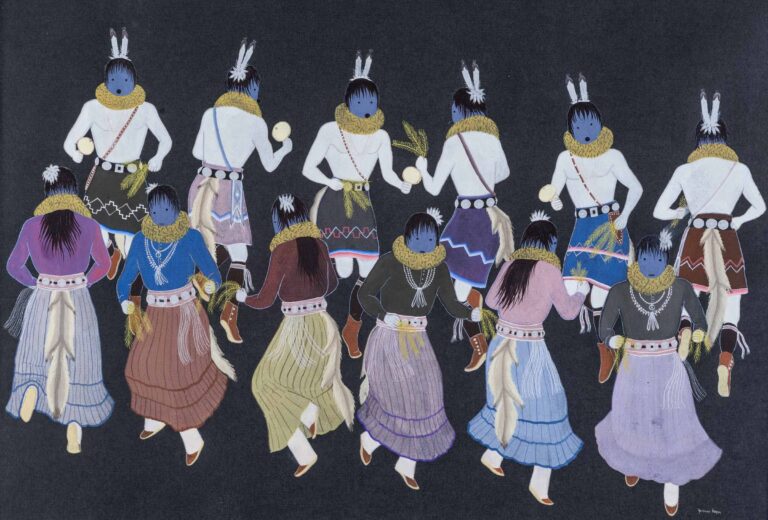Harrison Begay has been called the “Patriarch of Navajo Art.” His long and influential artistic career began in the 1930s and spanned the second half of the 20th century. Despite his prominence, and as with so many of his contemporaries, Begay’s early years are practically undocumented. Biographical records, and, accordingly, most accounts of his life, begin with his enrollment in the U.S. Indian Boarding School system.
In 1932, Begay started school at the Office of Indian Affairs’ vocational school at Fort Wingate, NM—where the artist reports being given the Anglican name “Harrison Begay.”1 During his 8th grade year in 1934, at the age of seventeen, Begay transferred to the Santa Fe Indian School. There, he studied art under Dorothy Dunn at The Studio School for two years (in 9th and 10th grades during the 1935/36 and 1936/37 school years), earning A’s in the subject. Begay continued his art education during his senior year under Dunn’s successor, Gerónima Montoya Cruz.2 Harrison Begay’s classmates at The Studio School included Timothy Begay and Allan Houser.
After graduating high school in May 1939, Begay began studying architecture at Black Mountain College in North Carolina. WWII interrupted his schooling, however, and Begay spent the next four years in military service. In 1951, he resumed his professional artistic pursuits, co-founding Tewa Enterprises with fellow artist Gerald Nailor Sr. in order to create large series of silkscreen prints of their own and others’ work (including Allan Houser’s). Finding it especially suitable to printmaking and reproduction, Begay continued to work in the Studio Style pioneered and proselytized by Dunn, creating artworks depicting Navajo culture. Likely due to its aesthetic as much as its accessibility, Begay’s art found a wide audience and was popularized.
Begay continued to create art well into his nineties. In 1954, he received a special commendation from the French government, the Palmes d’ Academiques. He was awarded the Native American Master Artist Award from the Heard Museum in 1995 as well as a Lifetime Achievement Award in 2003 by the Southwestern Association for Indian Arts.




